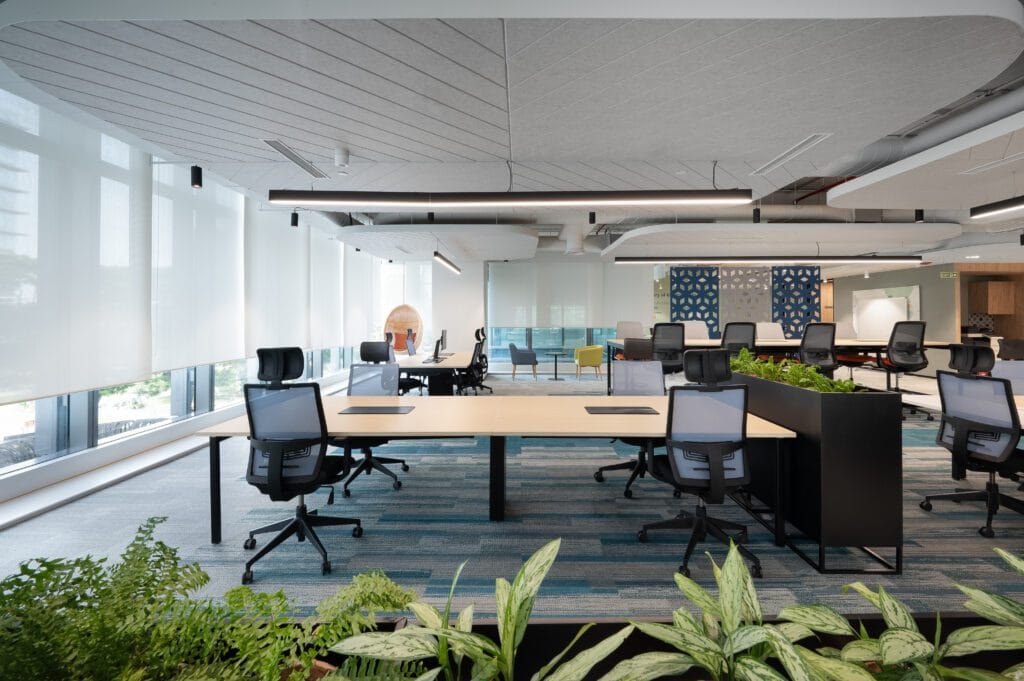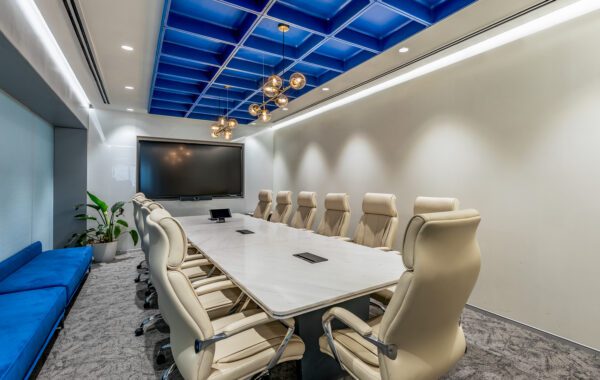Furniture Trends in Modern Workspaces: What’s In & What’s Out

The modern workplace is evolving rapidly, and so is its furniture. With a growing focus on functionality, employee well-being, and aesthetics, companies are rethinking traditional office setups. Here’s a look at what’s trending in office furniture and what’s being left behind.
What’s In?
1. Ergonomic and Adaptive Workstations
Gone are the days of rigid desks and chairs. Adjustable-height desks, ergonomic seating, and modular workstations are now a staple. These designs promote comfort, reduce strain, and cater to diverse working styles.
2. Collaborative and Flexible Seating
Open office layouts are here to stay, but they’re evolving. Instead of fixed cubicles, offices are embracing lounge-style seating, modular sofas, and flexible seating arrangements that encourage interaction and teamwork.
3. Sustainable and Eco-Friendly Materials
Companies are prioritizing sustainability by opting for furniture made from recycled, biodegradable, or responsibly sourced materials. Bamboo desks, reclaimed wood tables, and chairs made from ocean plastic are making their way into modern offices.
4. Acoustic Solutions for Privacy
With open offices being the norm, acoustic furniture is a must. Soundproof pods, upholstered panels, and acoustic booths help create quiet spaces within bustling work environments, enhancing focus and productivity.
5. Smart and Tech-Integrated Furniture
Furniture is getting smarter. Desks with built-in wireless charging, chairs that track posture, and conference tables with integrated connectivity solutions are streamlining workspaces for better efficiency.
6. Home-Inspired Comfort
Blurring the lines between home and office, modern workspaces now incorporate cozy elements like plush chairs, warm lighting, and stylish coffee tables to create a welcoming environment that boosts employee morale.
What’s Out?
1. Bulky, Traditional Office Desks
Oversized wooden desks with limited functionality are making way for sleek, minimalist designs that offer better space efficiency and adaptability.
2. Fixed Cubicles and High-Partitioned Workspaces
Rigid, isolating cubicles are being replaced with open layouts and dynamic workstations that promote collaboration while maintaining privacy through smart partitions.
3. Synthetic and Plastic-Based Furniture
With sustainability taking center stage, furniture made from cheap plastics and synthetic materials is being phased out in favor of natural, recyclable, and eco-conscious alternatives.
4. Uncomfortable, One-Size-Fits-All Chairs
Gone are the days of standard office chairs that offer little to no ergonomic support. Modern workspaces prioritize adjustable, posture-friendly seating that enhances employee well-being.
5. Dull and Monochrome Color Schemes
Neutral, uninspiring office furniture is being swapped for vibrant, biophilic designs that incorporate natural elements, bold colors, and textures to create a lively and engaging work environment.
The future of office furniture is all about adaptability, comfort, and sustainability. As workspaces continue to evolve, businesses must stay ahead by investing in designs that promote productivity, well-being, and style. By embracing these trends, companies can create spaces that inspire creativity and collaboration while keeping employees happy and engaged.



